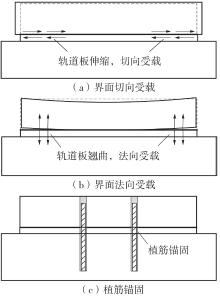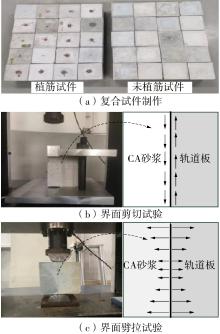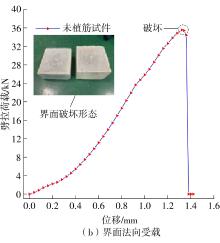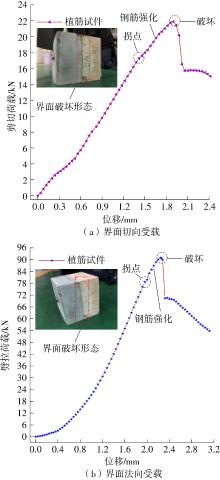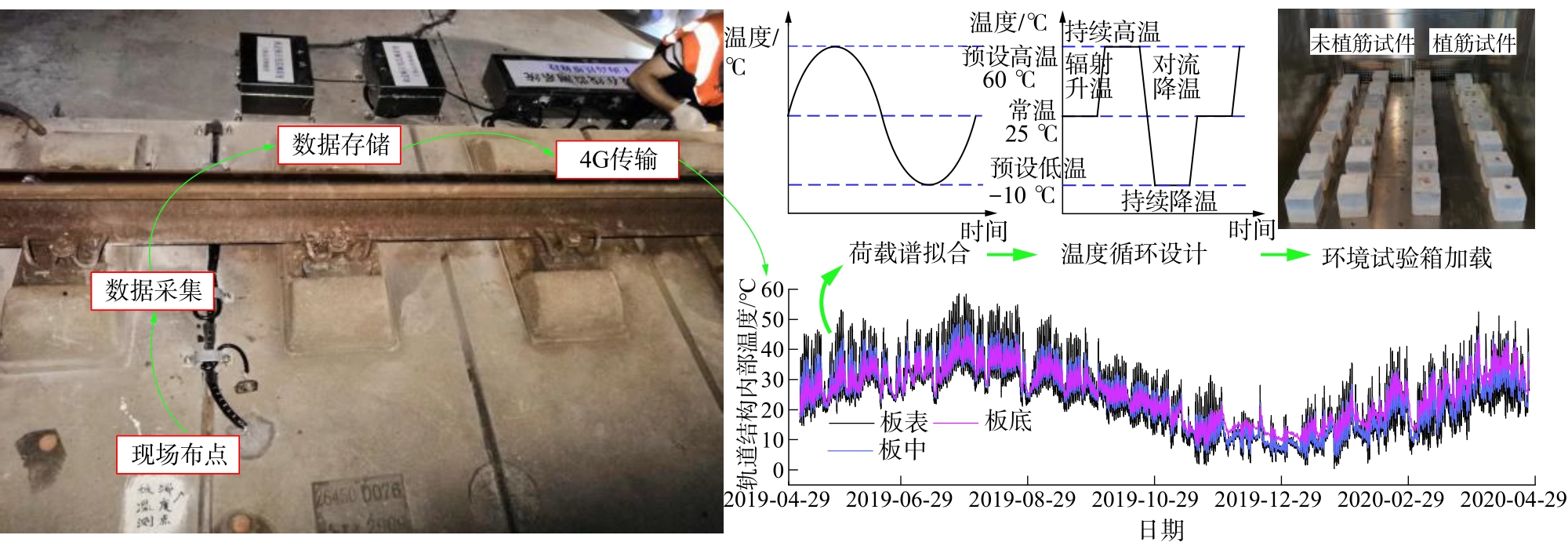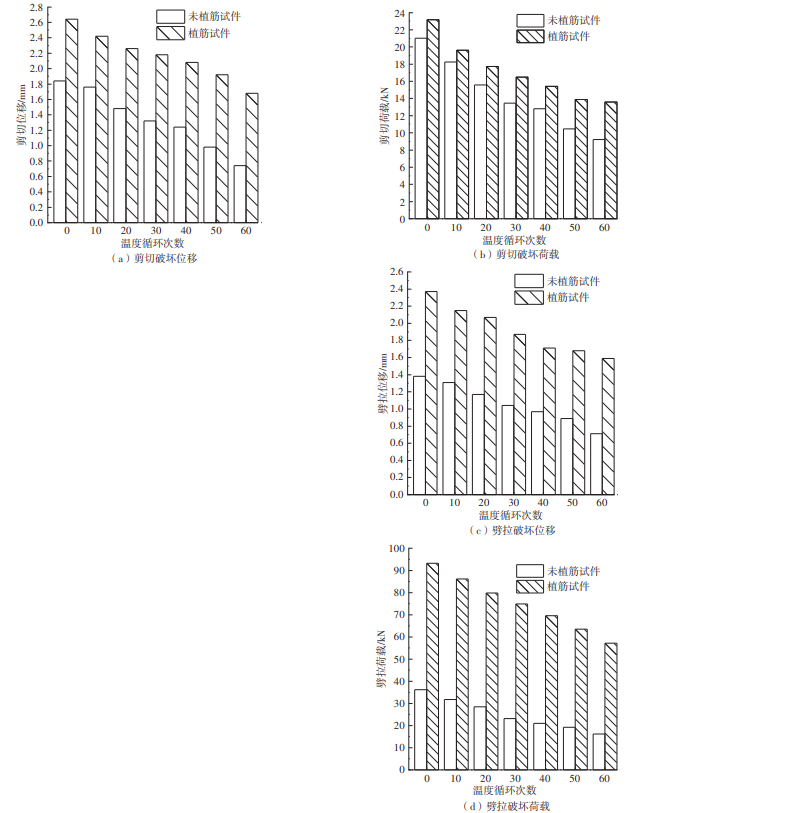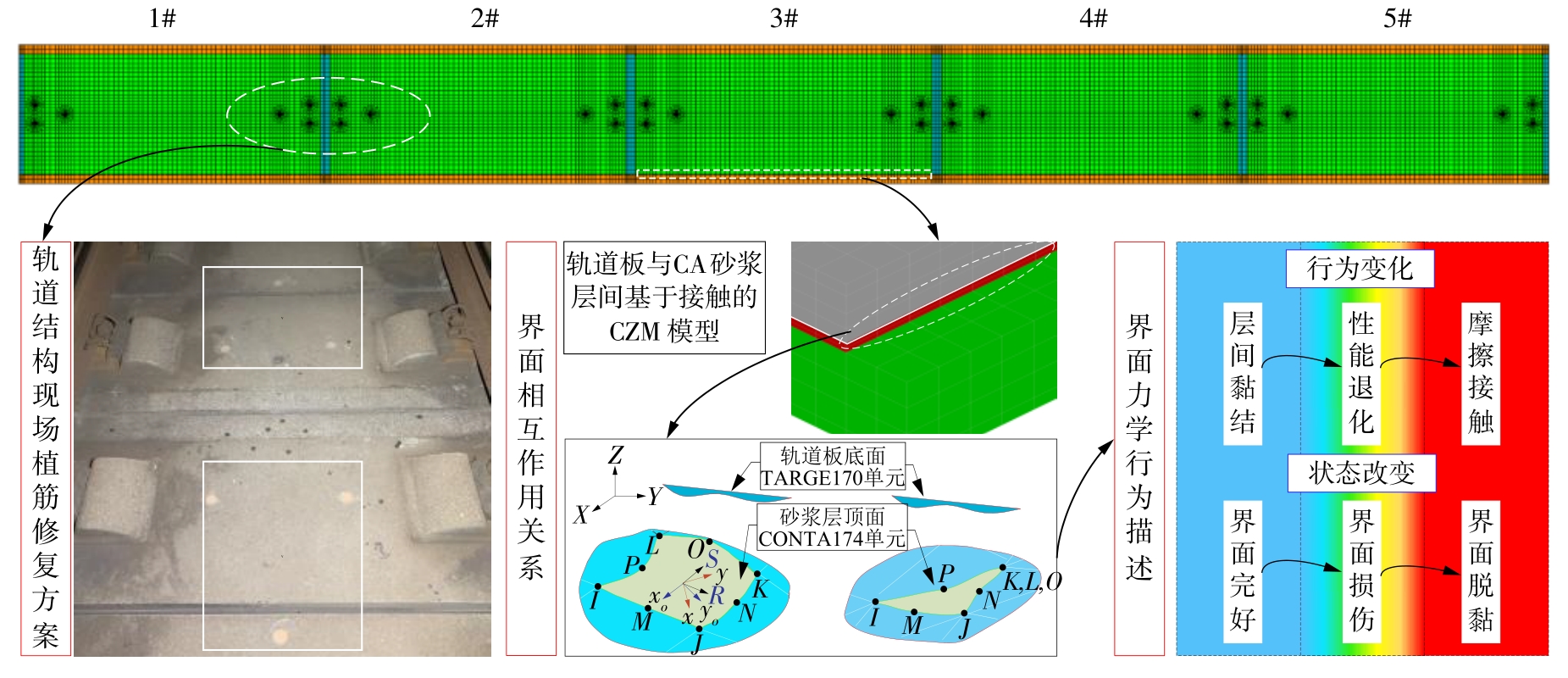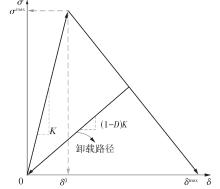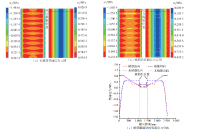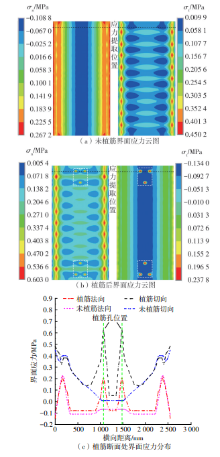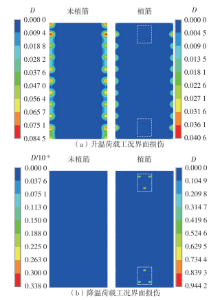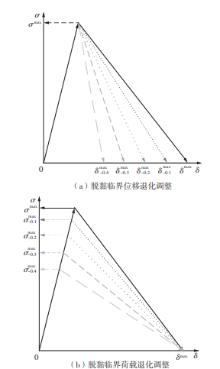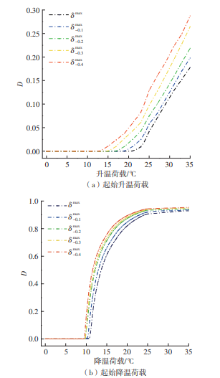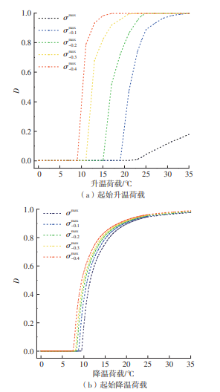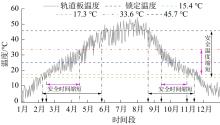Journal of South China University of Technology(Natural Science Edition) ›› 2023, Vol. 51 ›› Issue (8): 21-31.doi: 10.12141/j.issn.1000-565X.220735
Special Issue: 2023年交通运输工程
• Traffic & Transportation Engineering • Previous Articles Next Articles
Evolution of Interface Performance of Longitudinal Ballastless Track Under Temperature Load After Embedded Steel Bars
LU Hongyao1,2,3 XU Yude1,2
- 1.Key Laboratory of Road and Traffic Engineering of the Ministry of Education, Tongji University, Shanghai 201804, China
2.Shanghai Key Laboratory of Rail Infrastructure Durability and System Safety, Tongji University, Shanghai 201804, China
3.School of Urban Rail Transportation, Shanghai University of Engineering Science, Shanghai 201620, China
-
Received:2022-11-09Online:2023-08-25Published:2023-03-16 -
Contact:路宏遥(1990-),男,博士生,主要从事轨道结构健康监测技术研究。 E-mail:luhongyao1@163.com -
About author:路宏遥(1990-),男,博士生,主要从事轨道结构健康监测技术研究。 -
Supported by:the National Natural Science Foundation of China(51978393)
CLC Number:
Cite this article
LU Hongyao, XU Yude. Evolution of Interface Performance of Longitudinal Ballastless Track Under Temperature Load After Embedded Steel Bars[J]. Journal of South China University of Technology(Natural Science Edition), 2023, 51(8): 21-31.
share this article
| 1 | 赵国堂,刘钰 .CRTSⅡ型板式无砟轨道结构层间离缝机理研究[J].铁道学报,2020,42(7):117-126. |
| ZHAO Guotang, LIU Yu .Mechanism analysis of delamination of CRTSⅡ slab ballastless track structure[J].Journal of the China Railway Society,2020,42(7):117-126. | |
| 2 | CAI X P, LUO B C, ZHONG Y L,et al .Arching mechanism of the slab joints in CRTSII slab track under high temperature conditions[J].Engineering Failure Analysis,2019,98:95-108. |
| 3 | 许玉德,缪雯颖,严道斌,等 .离缝修复条件下无砟轨道板温度翘曲变形特征[J].同济大学学报(自然科学版),2021,49(3):400-410. |
| XU Yude, MIAO Wenying, YAN Daobin,et al .War-ping features of ballastless track-slab under debonding-repaired condition[J].Journal of Tongji University(Natural Science),2021,49(3):400-410. | |
| 4 | SONG L, LIU H B, CUI C X,et al .Thermal deformation and interfacial separation of a CRTS II slab ballastless track multilayer structure used in high-speed railways based on meteorological data[J].Construction and Buil-ding Materials,2020,237:117528/1-16. |
| 5 | HUANG Y C, GAO L, ZHONG Y L,et al .Study on the damage evolution of the joint and the arching deformation of CRTS-II ballastless slab track under complex temperature loading[J].Construction and Building Materials,2021,309:125083/1-12. |
| 6 | 粟淼,朱琦治,戴公连,等 .考虑界面起始黏结缺陷的CRTS Ⅱ型板式无砟轨道温度变形[J].交通运输工程学报,2020,20(5):73-81. |
| SU Miao, ZHU Qizhi, DAI Gonglian,et al .Temperature deformation of CRTS II slab ballastless track conside-ring interfacial initial bond defects[J].Journal of Traffic and Transportation Engineering,2020,20(5):73-81. | |
| 7 | 钟阳龙,高亮,侯博文 .不同植筋方案纵连板轨道砂浆层抗剪性能分析[J].西南交通大学学报,2018,53(1):38-45,63. |
| ZHONG Yanglong, GAO Liang, HOU Bowen .Shear behavior of mortar layer in continuous slab track with different arrangement schemes of embedded steel bars[J].Journal of Southwest Jiaotong University,2018,53(1):38-45,63. | |
| 8 | 杨俊,陈瑞,张中亚,等 .植筋参数对UHPC-石材界面抗剪性能的影响研究[J].土木工程学报,2022,55(6):62-78. |
| YANG Jun, CHEN Rui, ZHANG Zhongya,et al .Effects of planting bar parameters on the shear resistance of UHPC-Stone interface[J].China Civil Engineering Journal,2022,55(6):62-78. | |
| 9 | 闫斌,刘施,戴公连,等 .我国典型地区无砟轨道非线性温度梯度及温度荷载模式[J].铁道学报,2016,38(8):81-86. |
| YAN Bin, LIU Shi, DAI Gonglian,et al .Vertical nonlinear temperature distribution and temperature mode of unballasted track in typical areas of China[J].Journal of the China Railway Society,2016,38(8):81-86. | |
| 10 | 刘昊旻,路宏遥,何越磊,等 .基于优化气象参数的轨道板内部温度试验研究与预测分析[J].铁道科学与工程学报,2019,16(5):1120-1128. |
| LIU Haomin, LU Hongyao, HE Yuelei,et al .Experimental study and prediction analysis of internal temperature of track slab based on optimized meteorological parameters[J].Journal of Railway Science and Enginee-ring,2019,16(5):1120-1128. | |
| 11 | ZHOU R, ZHU X, REN W X,et al .Thermal evolution of CRTS Ⅱ slab track under various environmental temperatures:experimental study[J].Construction and Building Materials,2022,325:126699/1-17. |
| 12 | 何越磊,黄自鹏,路宏遥,等 .温度荷载作用下高铁无砟轨道界面性能演变规律研究[J].铁道标准设计,2023,67(4):47-53. |
| HE Yuelei, HUANG Zipeng, LU Hongyao,et al .Study on the evolution law of interface performance of high-speed railway ballastless track under temperature load[J].Railway Standard Design,2023,67(4):47-53. | |
| 13 | REN J J, WANG J, LI X,et al .Influence of cement asphalt mortar debonding on the damage distribution and mechanical responses of CRTS I prefabricated slab[J].Construction and Building Materials,2020,230:116995/1-12. |
| 14 | ZHU W F, CHEN X J, LI Z W,et al .A SAFT method for the detection of void defect inside a ballastless track structure using ultrasonic array sensors[J].Sensors,2019,19(21):4677/1-12. |
| 15 | LI Z W, LIU X Z, LU H Y,et al .Surface crack detection in precasted slab track in high-speed rail via infrared thermography[J].Materials,2020,13(21):4837/1-16. |
| 16 | 田冬梅,邓德华,彭建伟,等 .温度对水泥乳化沥青砂浆层与混凝土层间界面黏结影响[J].铁道学报,2013,35(11):78-85. |
| TIAN Dongmei, DENG Dehua, PENG Jianwei,et al .Influence of temperature on interfacial bongding between cement emulsified asphalt mortar layer and concrete layer[J].Journal of the China Railway Society,2013,35(11):78-85. | |
| 17 | 赵春发,刘建超,毛海和,等 .温度梯度荷载作用下CRTS Ⅱ型板式无砟轨道砂浆层界面损伤分析[J].中国科学:技术科学,2018,48(1):79 -86. |
| ZHAO Chunfa, LIU Jianchao, MAO Haihe,et al .Interface damage analysis of CA mortar layer of the CRTS II ballastless slab track under temperature gradient loads[J].Scientia Sinica(Technologica),2018,48(1):79 -86. | |
| 18 | 勾红叶,刘畅,班新林,等 .高速铁路桥梁-轨道体系检测监测与行车安全研究进展[J].交通运输工程学报,2022,22(1):1-23. |
| GOU Hongye, LIU Chang, BAN Xinlin,et al .Research progress of detection,monitoring and running safety of bridge-track system for high-speed railway[J].Journal of Traffic and Transportation Engineering,2022,22(1):1-23. | |
| 19 | 许玉德,缪雯颖,严道斌,等 .基于改进混合模式内聚力模型的无砟轨道层间损伤分析[J].铁道学报,2021,43(4):125-135. |
| XU Yude, MIAO Wenying, YAN Daobin,et al .Analysis of interlayer interface damage in ballastless track based on improved mixed-mode cohesive zone model[J].Journal of the China Railway Society,2021,43(4):125-135. | |
| 20 | XU Y D, YAN D B, ZHU W J,et al .Study on the mechanical performance and interface damage of CRTS II slab track with debonding repairment[J].Construction and Building Materials,2020,257:119600/1-16. |
| 21 | OINONEN A, MARQUIS G .A constitutive model for interface problems with frictional contact and cohesion[J].European Journal of Mechanics - A/Solids,2015,49:205-213. |
| [1] | ZHENG Yajing, MA Zihan, CHANG Xiaoting, et al. Comprehensive Optimization of Track Scale Configuration of Intermediate Station and Train Timetable of High-Speed Railway [J]. Journal of South China University of Technology(Natural Science Edition), 2023, 51(4): 115-123. |
| [2] | ZHENG Yajing LI Yaohui JIN Wenzhou. Study on the Optimization of EMU Turnover with Considering Reconnection and Empty Return [J]. Journal of South China University of Technology (Natural Science Edition), 2021, 49(4): 80-89. |
| [3] | GU Quan, ZHANG Deyu, GUO Wei, et al. An Efficient Computation Method for Real-Time Hybrid Testing of Vehicle-Track-Bridge Coupling System of High-Speed Railway [J]. Journal of South China University of Technology (Natural Science Edition), 2021, 49(3): 123-130. |
| [4] | LI Yangbo ZHANG Jiasheng ZHU Zhihui WANG Xuan SHI Xion. Accumulative Deformation of Subgrade Under CRTS Ⅲ Slab Track [J]. Journal of South China University of Technology (Natural Science Edition), 2019, 47(3): 135-142. |
| [5] | DAI Gonglian GE Hao ZHENG Rongrong CHEN Guorong. Stress Analysis of Continuously Welded Rail of Ballastless Tracks on Simply Supported Girder Bridges with Different Spans [J]. Journal of South China University of Technology (Natural Science Edition), 2019, 47(10): 81-92. |
| [6] | . Dynamic Performance Analysis of Asphalt Pavement Under Moving Vehicle Load and Seasonal Temperature Variation [J]. Journal of South China University of Technology (Natural Science Edition), 2017, 45(4): 66-73. |
| [7] | DAI Gong-lian LIU Xiang-yu LIU Wen-shuo. Experimental Research on Dynamic Properties of CRTSⅡ Ballastless Track on Simply-Supported Beam [J]. Journal of South China University of Technology (Natural Science Edition), 2017, 45(4): 95-102. |
| [8] | . Experimental study on the relationship between uniform temperature spectra of CRTS II slab-type ballastless track on bridge and atmospheric temperature [J]. Journal of South China University of Technology (Natural Science Edition), 2017, 45(11): 0-0. |
| [9] | DAI Gong-lian SU Miao . Numerical Stimulation of Interface Delamination Failure for Prefabricated Slab Ballastless Track [J]. Journal of South China University of Technology (Natural Science Edition), 2016, 44(7): 102-107,122. |
| [10] | HONG Lei DUO Run-min WANG Su-yan. Influence of Bond Length on Bonded Interface Performance of CFRP-C60 Concrete [J]. Journal of South China University of Technology (Natural Science Edition), 2016, 44(2): 14-19. |
| [11] | DAI Gong-lian SU Hai-ting YAN Bin ZHU Jun-pu. Nonlinear Temperature Distribution of Longitudinal Plate-Type Ballastless Track in Spring [J]. Journal of South China University of Technology (Natural Science Edition), 2016, 44(2): 20-25,32. |
| [12] | Chen Ling-kun Jiang Li-zhong Wang Li-ping Luo Bo-fu. Analysis of Elastoplastic Seismic Response of High-Speed Railway Bridge with Round-Ended Piers [J]. Journal of South China University of Technology (Natural Science Edition), 2011, 39(6): 126-131. |
| [13] | Tan Yan He Zeng Gao Jun-tao. Isolation Analysis of Low-Frequency Vibration Induced by High-Speed Railway [J]. Journal of South China University of Technology (Natural Science Edition), 2011, 39(6): 132-136,154. |
| Viewed | ||||||
|
Full text |
|
|||||
|
Abstract |
|
|||||
